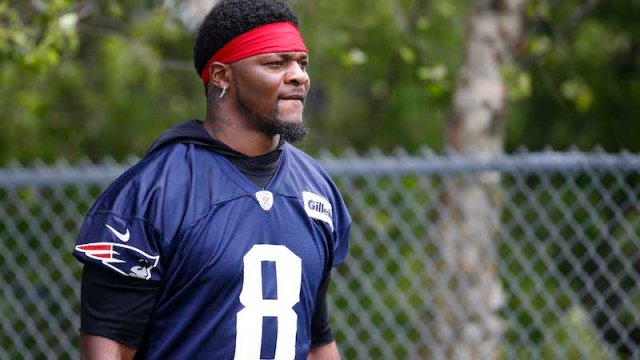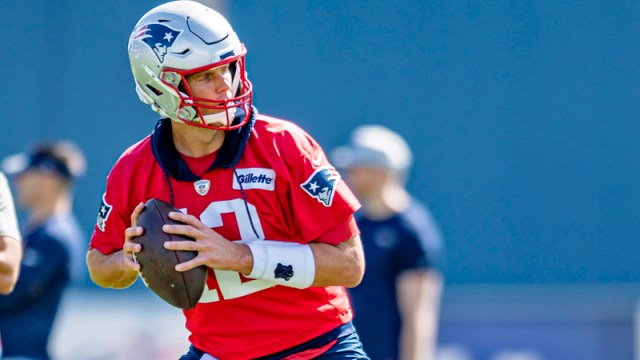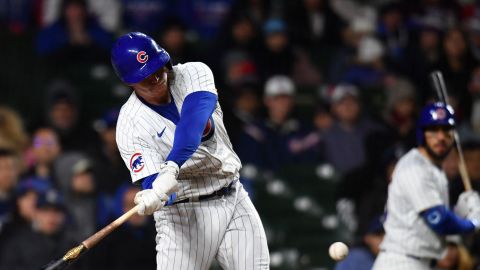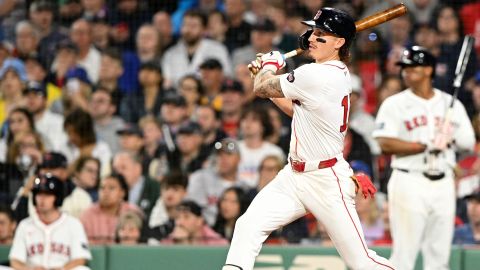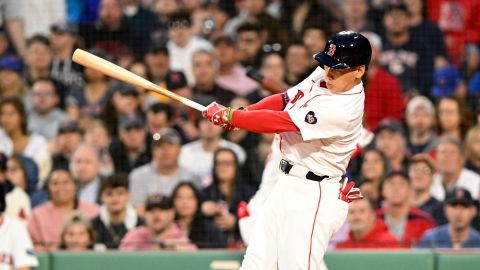Expecting fireworks? The Boston Red Sox didn’t even light off a sparkler at the 2019 Major League Baseball trade deadline.
The Red Sox stood pat Wednesday despite an inconsistent rotation and an obvious need in their bullpen, creating more questions as to whether Boston has enough to repeat as World Series champions.
It’s been a bumpy road in 2019 after a smooth ride in 2018. The terrain doesn’t figure to get any easier to navigate, either, so let’s make sense of why the Red Sox didn’t pull off any significant moves before the deadline, outside of acquiring starting pitcher Andrew Cashner from the Baltimore Orioles a few weeks ago.
Here are five major takeaways:
1. The Red Sox are stuck in neutral.
Boston took the path of least resistance, for better or worse, and it’s because this season hasn’t gone according to plan. The Red Sox entered deadline day sitting nine games behind the Yankees in the American League East standings and two games back of the AL’s second wild-card spot, which president of baseball operations Dave Dombrowski acknowledged played a role in his approach.
“I mean, hopefully we can win the division, but realistically, we’re probably playing first for a wild-card spot,” Dombrowski said Wednesday of Boston’s inactivity. “So you’re playing for a one-game wild card. And I look at that a little bit differently as far as what you’re willing to do and the risk you’re willing to take.”
Think of it as a game of Texas Hold ’em. Each team has seen the flop. The Red Sox still like their hand based on the possibilities, but it’s just not as strong as it was when the cards were dealt, leaving Dombrowski with a dilemma: Go all-in, and add reinforcements in an attempt to strike it rich, or fold, and sell off pieces with an eye toward the next hand?
He ultimately chose neither path, instead opting simply to see another card without committing any more to the pot. It’s the safe play and one that basically leaves Boston’s 2019 fate in the hands of Lady Luck.
Understandable? Sure. Boston’s underwhelming performance to date suggests this year’s team wasn’t worthy of any more significant investments — either financial or in terms of surrendering prospect capital — at the deadline. But there’s also reason to believe in the Red Sox’s potential, making it hard to fathom why Boston didn’t make at least a marginal upgrade to enhance the club’s standing without breaking the bank.
2. The overall message is debatable.
The Red Sox’s clubhouse can interpret the front office’s inactivity in one of two ways: Either Dombrowski and Co. truly have faith in the current roster to contend for another World Series title — as he contests — or there’s internal skepticism over the team’s 2019 potential.
The answer likely lies somewhere in the middle, with “cautiously optimistic” probably the best way to describe Dombrowski’s post-deadline mindset and overall thoughts on this year’s squad.
“The reality is, if we’re going to make it, it’s going to be the guys that are in the clubhouse. I mean, that is the case,” Dombrowski said. “So we could add pieces to that, but we have a very talented big league club. And sure, we have holes. I mean, we all have holes. We can see that clubs have holes because everybody’s looking to do something. The reality is we have a talented group of players.”
Will the Red Sox’s lack of moves serve as motivation for a prideful franchise defending its title? Or will some players — namely the few pulling their weight this season — view the inactivity as wariness and take their foot off the gas moving forward?
As an outsider, it was difficult to decipher Dombrowski’s messaging immediately following Boston’s inactive deadline. What’s more important, however, is how his words are viewed by those wearing the uniform.
3. Selling wasn’t really an option.
While Dombrowski theoretically could’ve shipped away pieces for future assets, as mentioned above, it sounds like the Red Sox never really considered that avenue.
“I don’t think it was ever really on the table,” Dombrowski said. “I think our conversations at the beginning of last week were more a matter of just seeing where we were going to go. We never really talked about, per se, selling.”
This makes sense, seeing as how the Red Sox remain very much in the thick of the wild-card standings and trading from the major league roster for prospects probably wouldn’t have gone over well in the court of public opinion. Not to mention Boston didn’t really have any obvious pieces to sell off, as the team’s impending free agents — Rick Porcello, Mitch Moreland, Steve Pearce and Brock Holt — wouldn’t have netted much of a return.
But it’s fair to question whether the Red Sox should have considered reconfiguring their roster, much like the Cleveland Indians did by trading away their best pitcher, Trevor Bauer, for win-now pieces in the midst of their own postseason push. J.D. Martinez can opt out of his contract this winter, and Mookie Betts and Jackie Bradley Jr. are among those set to hit free agency after the 2020 season. Trading away someone of that ilk — even if not those players specifically — could have been a means to an end.
“There were some discussions that involved major league players and really rattling cages and shifting things around,” Red Sox president Sam Kennedy said Thursday on WEEI’s “The Greg Hill Show.” “I’m glad those didn’t happen, because I believe in the guys we have right now.”
4. The current problems might persist.
The most troubling aspect of the Red Sox standing pat involves the future. While the offseason presents a new opportunity to reshape and/or retool, Boston’s flaws both are obvious and significant, with no real end in sight.
The Red Sox will need at least one starter if Porcello leaves in free agency, although one could argue they’ll need to further augment their rotation based on its poor collective performance this season. And they’ll need help in their bullpen, an ongoing issue that Boston won in spite of last season.
There’s a case to be made Boston should’ve made a strong push prior to this year’s trade deadline for pitchers under team control through 2020, in spite of the sky-high price tags on those types of hurlers. Such a move could’ve satisfied the Red Sox’s short- and long-term needs with very few high-upside pitchers in the pipeline.
Maybe that means New York Mets closer Edwin Diaz. Maybe that means Kirby Yates of the San Diego Padres or Felipe Vazquez of the Pittsburgh Pirates. Who knows.
The fact is the Red Sox need pitching help — particularly a closer, if possible — now, and they’ll need it several months from now. The problem isn’t going to solve itself, and Boston might’ve just delayed the inevitable with its inactivity.
5. There’s one silver lining.
The only thing stranger than the Red Sox’s quiet trade deadline? The Yankees standing pat.
New York desperately needs rotation help, has plenty of resources to execute a trade and yet decided against adding an impact arm — all while the Houston Astros acquired ace Zack Greinke from the Arizona Diamondbacks.
This might mean little in terms of the AL East race — Boston probably isn’t winning the division, anyway — but the Red Sox face the Yankees eight times over their final 53 games and could meet their rivals in the postseason, at which point New York’s lack of deadline maneuvering could haunt general manager Brian Cashman.

